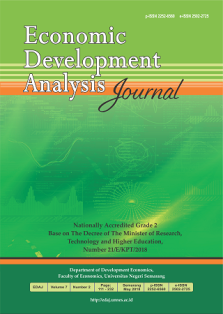Street Vendor in Semarang: Structuring, Empowerment, and Welfare
Abstract
This study aims to analyse (1) Semarang City Government policies in managing and empowering
street vendors, (2) implementation of local regulations in managing and empowering street vendors,
and (3) the impact of implementing policies in structuring and empowering street vendors. for their
welfare. This research uses a qualitative approach and case studies and research takes place in South
Batan and Penggaron. Data taken from observations, interviews, and literature studies. The results
of the study were analyzed with qualitative analysis techniques from Miles & Huberman and
Creswell. From the research analysis and field findings, the following results were obtained. First,
the Semarang City Government manages and empowers Street Vendors by referring to regional
regulation No. 11 of 2000. Second, the structuring policy carried out by the city government only
focuses on the implementation of relocation and elimination of business locations. Empowerment
activities managed by the government are facilitating access to capital, business facilitation
assistance, trade facilities, institutional development, and limited promotion through creative
product exhibitions. Third, the policies on structuring and empowering street vendors have direct
and indirect impacts on the welfare of street vendors, especially in South Batan. Based on the results
of the study it is recommended that the arrangement of street vendors be carried out by taking into
account the interests of the community of road access and also paying attention to the future of street
vendors.


